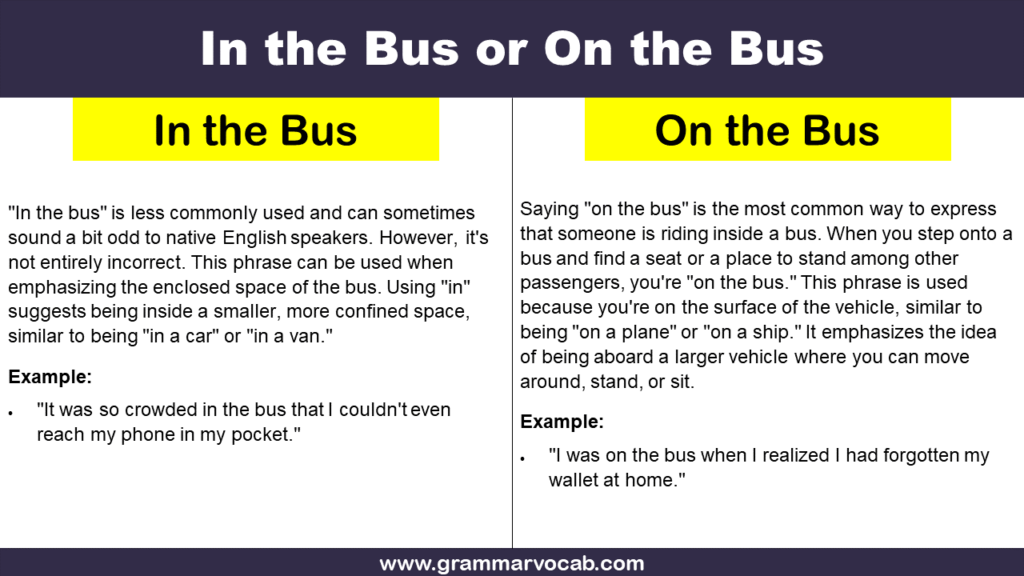When we talk about buses and how we use them, the words “in” and “on” can be a bit tricky. Both of these words tell us where something or someone is, but they are used in different ways. In this article, we will explore how to use “in the bus” and “on the bus” correctly, making it super easy to understand.
What Does “On the Bus” Mean?
Saying “on the bus” is the most common way to express that someone is riding inside a bus. When you step onto a bus and find a seat or a place to stand among other passengers, you’re “on the bus.” This phrase is used because you’re on the surface of the vehicle, similar to being “on a plane” or “on a ship.” It emphasizes the idea of being aboard a larger vehicle where you can move around, stand, or sit.
Example:
- “I was on the bus when I realized I had forgotten my wallet at home.”
What Does “In the Bus” Mean?
“In the bus” is less commonly used and can sometimes sound a bit odd to native English speakers. However, it’s not entirely incorrect. This phrase can be used when emphasizing the enclosed space of the bus. Using “in” suggests being inside a smaller, more confined space, similar to being “in a car” or “in a van.”
Example:
- “It was so crowded in the bus that I couldn’t even reach my phone in my pocket.”
When to Use Which?
Most of the time, when talking about riding a bus, we say “on the bus.” For example:
- I met an old friend on the bus today.
- There were no seats left on the bus.
We use “in the bus” when we focus on the inside space or when we are outside the bus talking about something or someone inside it. For example:
- He left his bag in the bus.
- There’s a new advertisement in the bus.
Must Try:



